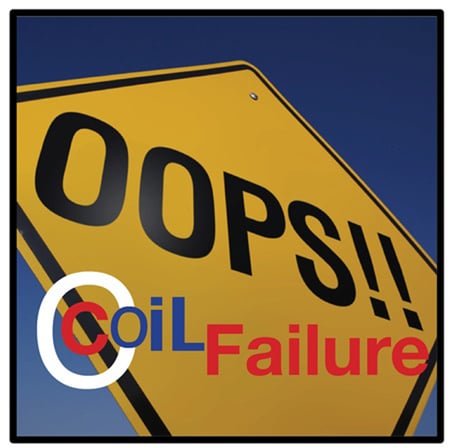If you’ve ever had an MRI Coil failure, you know it’s your basic nightmare. After all, unless you’ve got a spare around, it usually results in canceled procedures, patient rescheduling, potentially delayed diagnosis, increased work for your staff and a lot of  grumbling! And the revenues lost? When you factor in lost revenues and the cost of replacing and repairing a failed MRI coil, it can add up to $3,200+ every day it’s out of commission!
grumbling! And the revenues lost? When you factor in lost revenues and the cost of replacing and repairing a failed MRI coil, it can add up to $3,200+ every day it’s out of commission!
Needless to say, it’s a good idea to avoid MRI coil failures. But how?
Let’s start with the basics. Most MRI coils fail for one of four reasons:
- Frequent use
- Improper use
- Component fatigue or failure
- Force of impact when dropped or roughly handled
Let’s examine each reason a bit further.
It makes sense that after lengthy and frequent use, inevitably parts break or fail. Just like your vehicle needs special maintenance and part replacement after 30,000 miles of wear, the same holds true for MRIs.
Improper use can also cause failure. For example, it you try to use a transmit/receive coil in conjunction with a large body coil, the electronics in the T/R coil can break down, due to an increase of focused energy from the body coil. That’s why it’s important that all personal operating an MRI be thoroughly trained (and retrained)!
As an MRI coil ages, the component can become degraded. Sometimes electronic component break down, or solder connections fail. Sometime flexible component become brittle. Sometimes, there can be design limitations that reveal themselves over time. Oftentimes, MRI operators can sometimes be in a hurry and will remove the coil connector from the system connection port too forcefully. This can be an extremely expensive issue, as MRI coil connections can’t be repaired on site, as a rule.
No matter how careful your staff can be, accidents can happen, especially since MRI coils are very delicate in nature. It’s important to handle them with extreme care. However, sometimes there are “oops” moments. A coil can be dropped, resulting in broken coil loops, damaged cables, failures in solder joints and damaged connector pins. And sometimes, it just loosens components up enough to cause failure.
So what happens if your MRI coil has an issue?
Sadly, many original equipment manufacturers (OEMs) don’t offer MRI coil repair services. However, many provide an exchange option that is either covered through a warranty or service contract. Usually, your engineer will remove the damaged coil and send it to the OEM’s repair facility. The OEM will provide a new coil. When the damaged coil is repaired or refurbished, it becomes part of the OEM’s inventory. This is the quickest kind of repair option, since it reduces downtime. But it’ll cost you. It’s about the most expensive repair option there is.
If the issue with your MRI coil was caused by misuse or abuse, you’re on the hook for repair or replacement costs.
There are independent MRI coil repair vendors that can also offer loaner coils for the duration of the repair. They are usually shipped overnight, so downtime is minimal. Repairs usually take 3-10 days, and if the MRI coil can’t be repaired, you can usually purchase refurbished replacement coils—for significantly less than most OEMs.
The long and the short of it is this: treat MRI coils gingerly, perform routine maintenance, and have a game plan in place for when a coil fails. If you have additional questions, don’t hesitate to contact an expert at Atlantis Worldwide.
Contact Jeff Weiss if you need a coil repaired at 212-366-9100 or jeffweiss@atlantisworldwide.com
Some blogs you may have missed:
- Most Common Artifacts in MRI
- Physicians & Social Media: Yay or Nay?
- 7 Benefits of Medical Imaging File Sharing
- Your Body Image: New Uses for DXA
- Can Your MRI Be Hacked?
- Free MRI Resources
About the author: Vikki Harmonay



